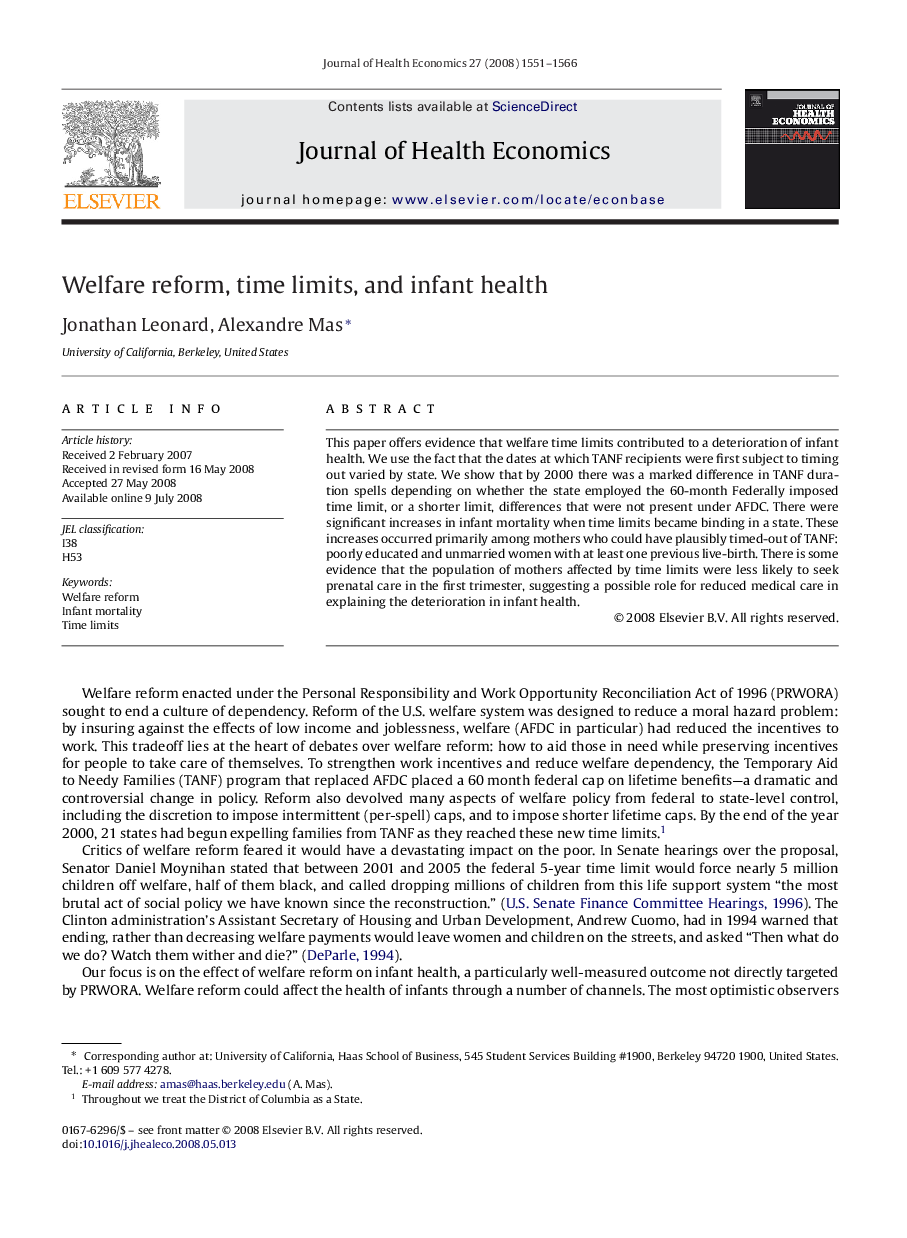| Article ID | Journal | Published Year | Pages | File Type |
|---|---|---|---|---|
| 961630 | Journal of Health Economics | 2008 | 16 Pages |
Abstract
This paper offers evidence that welfare time limits contributed to a deterioration of infant health. We use the fact that the dates at which TANF recipients were first subject to timing out varied by state. We show that by 2000 there was a marked difference in TANF duration spells depending on whether the state employed the 60-month Federally imposed time limit, or a shorter limit, differences that were not present under AFDC. There were significant increases in infant mortality when time limits became binding in a state. These increases occurred primarily among mothers who could have plausibly timed-out of TANF: poorly educated and unmarried women with at least one previous live-birth. There is some evidence that the population of mothers affected by time limits were less likely to seek prenatal care in the first trimester, suggesting a possible role for reduced medical care in explaining the deterioration in infant health.
Keywords
Related Topics
Health Sciences
Medicine and Dentistry
Public Health and Health Policy
Authors
Jonathan Leonard, Alexandre Mas,
